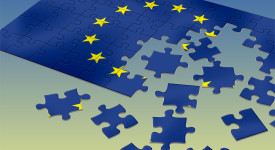Military strategists have observed that if Europe came into conflict with Russia, only a few thousand of the more than one million troops would be ready to be effectively deployed. Washington now seeks to step up this preparedness and make sure that at least 300,000 troops and additional aircraft and naval ships could reach the potential conflict zone within 30 days after NATO commanders put forces on alert.
Relations between Russia and the West are the coldest they have been since the Cold War. This week, NATO joined the US, Canada and a few EU members in the most extensive expulsion of Russian diplomats since 1991 in a protest again the poisoning of a former Russian spy in Salisbury, England. The US has also additionally imposed sanctions over Moscow’s military intervention in Crimea and alleged meddling in the 2016 US presidential election. The Kremlin denies both the nerve-agent attacks and election meddling.
Boosting the Alliance’s readiness in the context of resurgent threats from Russia has become a US priority. US Defense Secretary Jim Mattis said that NATO must speed up decision-making, enhance its ability to move forces and make sure it has units ready to be deployed with little notice. The US proposal seeks the Alliance to commit to having 30 battalions, 30 fighter squadrons and 30 naval ships ready to deploy. That would mean approximately 30,000 troops and more than 360 fighter planes.
This strategy differs from the one used during the Cold War when Americans foresaw moving 10 US divisions – about 200,000 troops – to the old continent in 10 days. Now, the focus is on getting Europeans able to mobilize, less ambitiously, within 30 days. “The idea is to get a readiness mind-set, to identify forces where readiness needs to be enhanced, but spread that out among the nations,” said Hans Binnendijk, a co-author of a report on NATO responsiveness.







